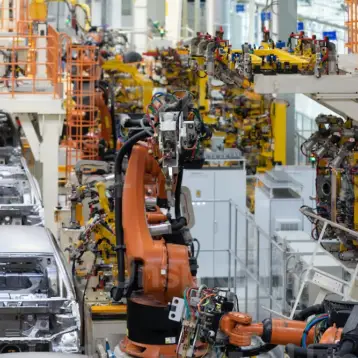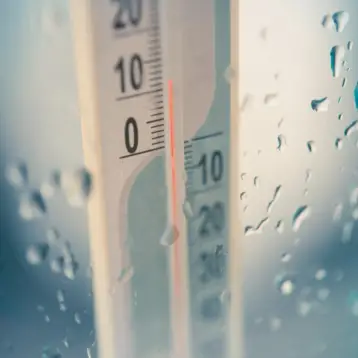Engineers from Kansas State University (KSU), in collaboration with the San Diego-based integrated circuit manufacturer “Peregrine Semiconductor” are set to develop an energy-harvesting radio, which would be able to continuously transmit data without ever requiring a change of batteries.
 |
Professor Bill Kuhn
(Credit: Kansas State University) |
|
The research is being conducted by Bill Kuhn, professor of electrical and computer engineering at KSU and Xiaohu Zhang, a master’s student in electrical engineering. The two have demonstrated their design by constructing a small board on which a radio is powered by solar cells from inexpensive calculators. The board also includes a series of capacitors that capture and store light energy to power the radio without a battery. The scientists noted that although the working prototype is powered solely by light energy, energy-harvesting radios could, in fact, be powered by a variety of means, including electrochemical, mechanical, or thermal energy.
The current prototype uses a microprocessor to store the data before it’s transmitted via the “Mars chip” radio – a device developed for NASA by Kuhn and his team from KSU, Cal Tech’s Jet Propulsion Laboratory, and
Peregrine Semiconductor. This micro transceiver was originally designed to be used on Mars rovers and scouts and Kuhn says that the current project is, in a way, a NASA “spin-off” as the technology, developed for space exploration, is being “brought back” to be used right here on Earth.
Transmission of the stored data occurs, in Zhang’s model, every five seconds – that’s when the radio sends out a data-burst, which sounds like a “blip” and contains data that is translated by the computer into some meaningful information, such as stress or strain measurements on the underside of a bridge. According to Kuhn, this is just like sending a text message from one cell phone to another: after data is transmitted through the air, the recipient’s cell phone turns that data back into text that can be understood. “This type of radio technology may exist in your house, for instance if you have a temperature sensor outside that radios data to a display inside,” he said. “But those devices need to have their batteries changed. This radio doesn’t.”
Kuhn and Zhang, who have been working on the project for a little more than a year, are currently busy carrying out various tests on the proposed design, such as assessing how far the radio signals can travel from the sensors. The two are also working on several other issues, including determining which frequencies to use based on how the environment affects radio waves indoors versus outdoors, as well as looking at how noise and other factors may limit the sensitivity of the receiver that’s getting the data from all of the sensors. The two scientists are also focusing on the nature of timing and wake-up commands that trigger the sensors to send the stored information to the receiver.
 |
Demonstration board of the
energy-harvesting
radio (Credit: K-State’s department
of electrical and computer engineering) |
|
The technology could significantly ease the monitoring of the safeness of bridges as well as other structures, as it would eliminate cases when sensors that report such information as stress, temperature, and pressure on bridges cease to transmit the data due to an abrupt loss of battery power. Ron Reedy, Peregrine’s chief technical officer, said that fulfilling this vision of autonomous sensors requires highly integrated, low power radio chips – exactly the kind that KSU and Peregrine have demonstrated to NASA’s Jet Propulsion Laboratory on Peregrine’s trademarked UltraCMOS silicon-on-sapphire technology.
Kuhn and Zhang will present research on the radio communication aspects of the project at the Radio and Wireless Symposium in January 2009.
Be sure to check out TFOT’s recent article about the “Light for Life” flashlight, which unlike regular flashlights, offers a rechargeable battery that can be recharged in a minimal amount of time based on new ultracapacitor technology. You are also welcome to look up our coverage of Intel’s new wireless power technology called “Wireless Energy Resonant Link” (WREL), which according to the company, achieves significantly improved efficiency over previous technology.
More information on Kuhn and Zhang’s invention can be found
here.












